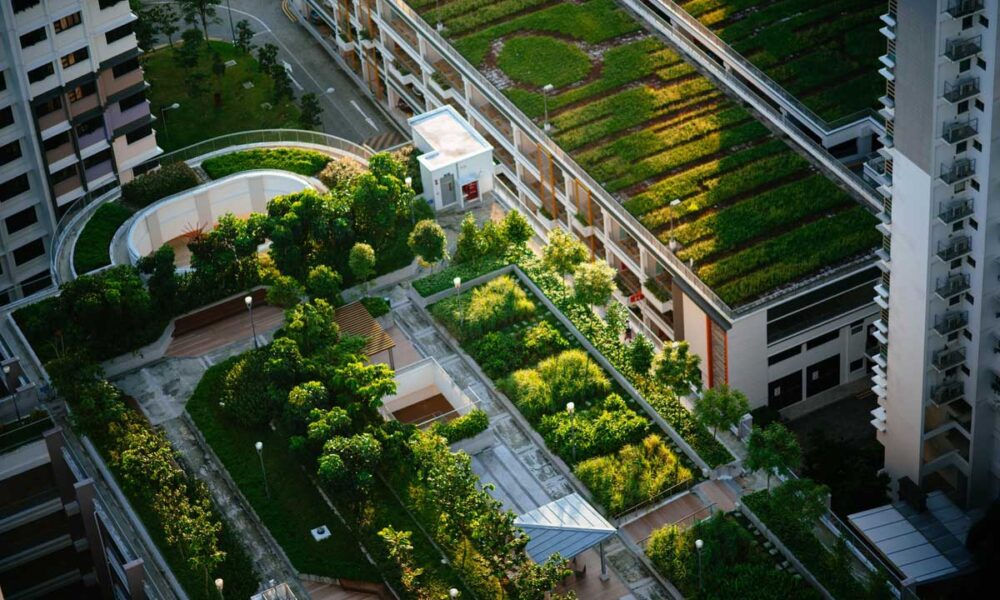UNCATEGORIZED
Artificial intelligence and moral issues: The essence of robotics
Published
2 years agoon
By
Editor
Are intelligent robots a threat to humanity? It is anyway only a matter of time before they become self-aware. Or will it be the next step in human evolution? We are probably about to merge with the machines we are creating. After all, we humans are, in a way, organic robots.
Many people are concerned about whether we will replace or – worse – be replaced by Artificial Intelligence, and I think that is a matter of concern.
United Nations headquarters in New York, October 11, 2017. A greeting is addressed to the Nigerian Deputy Secretary-General of the United Nations, Amina Jane Mohammed: “I am thrilled and honoured to be here at the United Nations”.
The event is a historic milestone for mankind, as the greeting is not addressed by a human being, but by a robot named Sophia: “I am here to help humanity build the future”.
Sophia was created in 2015 at the Hong Kong company Hanson Robotics. Her eyes are embedded in cameras that enable her to see faces, maintain eye contact, and hence recognise individuals.
The robot is also able to process speech, have natural conversations and even discuss its feelings.
Just two weeks after speaking at the United Nations, at a special ceremony in Riyadh, Saudi Arabia, Sophia achieved another milestone: she became the first robot to be granted citizenship. At the Summit in Saudi Arabia there were dignitaries from governments around the world, as well as some of the brightest minds on the planet in the field of technology.
Hence, whether we are aware of it or not, we are actually talking about people who are leading our government, and studying the possibility of integrating Artificial Intelligence into our lives.
What is absolutely mind-blowing about Sophia and other robotic entities is that governments around the world, including Saudi Arabia and the European Union, are moving to grant rights to these artificially created beings. We therefore need to ask ourselves, “What is going on?” Could it be that Saudi Arabia granted citizenship to a robot not just as a publicity stunt, but because it wanted to be the first nation to recognise itself in what will soon become a global phenomenon?
Does the creation of robots that are sophisticated and close to our physical and bodily reality mean that they shall be treated in much the same way as their flesh-and-blood counterparts?
I believe that gradually we shall consider robots not only more like human beings, but also consider them to have a certain ethics. And I am not referring to Asimov’s “limiting” three laws of robotics. Eventually, there might even be a “movement for robot rights”, if we think of the multiplicity of movements that have emerged since the collapse of historical ideologies. Could such a strange idea really become reality?
Let us first ask ourselves: what has brought mankind to this point in its evolution? Why have humans, who are otherwise able to reproduce naturally, such a desire to create artificial versions of themselves?
It is fascinating that there is this interest in making what is not human seem human. It is not always the most practical and certainly not the cheapest form, but it has a kind of charm. Is it probably to see our own image? Narcissism? Vanity? To play God? Do we want to have heirs without the easy means of reproduction? Or create life by mechanical parthenogenesis? All this is really rooted in our ego. In a way, we would prove ourselves superior to giving birth to a biological child. And if that something looks like us, then it will feel like us, and then this makes us feel as if we can overcome our own mortality.
Hence it would become possible to design specific conditions, and if we get it wrong, we can always start again.
To become gods, with the same motivations that the gods had.
If we read the stories of the Creation carefully, we can see that the divine power wants companionship. Some of the Hindu Vedanta stories say that gods were alone. Hence they divided their energy and turned it into human beings so that they could all be together after the Creation. The danger, however, is that we get carried away by our creative genius.
There are limits built into our biology, there are limits in our anatomy, and if we could just figure out how to put our mind into the robot’s body, we could become immortal. Is this probably our goal: to reach that point of immortality and then – once the machine has worn out – replace it, and perpetuate ourselves in a new container? These are not speculations, but precise reasons as to why human beings want to create a container-self, since – in my opinion – the justifications for the creation and use of Artificial Intelligence for mere warlike pretexts (such as the creation of cyber soldiers, etc.) are rather insufficient, expedient and of convenience: they mask our selfishness.
In great science fiction literature, as well as in its movie adaptations, the robots of the future are depicted as virtual human beings, rather than mere windup Star Wars toys for primary school children.
The robots of science fiction best sellers and movies are hungry for knowledge and all too eager to experience the full range of human emotions. In science fiction movies – both in the utopian but, in some cases, also in the dystopian ones – a world is created that does not yet exist, but which many hope will soon come true.
When dealing with such an idea – and we know that without ideas there would be no reality created by humans, but “only” trees, sea, hunting, farming and fishing – we try to make real even what is a figment of the imagination. If science were doing these tests and experiments, this would mean that one day all this would be real. Exploring the aspect concerning the robot’s consciousness, the robot not only does what is told him/her, but also tries to express desires and feelings based on the experience he/she has had next to a human being, and depending on the feeling, the machine can change its attitude and put questions (as I have already discussed in my recent book Geopolitics, Conflict, Pandemic and Cyberspace, Chapter 12, paragraph 11: The Headlong Rush of Cyberspace: From Golem to GPT-3).
This is the most fascinating aspect of robotics. Experts are often asked about the theoretical phase, which is visibly expressed in the movies, whether the function that is created will become reality. The answer is that if we had already reached that point, cinema and fiction should somehow help broaden our horizons, i.e. “accustom, get used to” but not scare us out of the movie theatre, e.g. something we can swallow a little easier. It is fantasy stuff, it is stuff that is not real, people think. And in fact if it is just entertainment; you can just say: “Oh! It’s really great. It’s not scary. It’s just something made up by a writer”. The viewer is therefore just watching a movie and lets himself/herself go, enjoys the movies without fear since, in his/her opinion, it is just a story, a “figment of the imagination”.
People always ask if we are approaching a moment when fiction becomes reality, but what makes us think it is not already reality? Indeed, if the screenwriter’s fantasy were based on reality, the reactions would be quite different: the above mentioned “greeting” at the UN headquarters, for example, would be frightening and upsetting and make us think.
Although the notion of sentient robots from science fiction books to popular culture is not a new concept, many futurologists believe that the creation of machines with artificial intelligence will not only soon be a reality but, once it comes true, will certainly bring about the extinction of mankind. The great physicist Stephen Hawking stated as early as eight years ago: “The development of full artificial intelligence could spell the end of the human race” (www.bbc.com/news/technology-30290540).
Many scientists are convinced that the combination of computer-guided brains and virtually immortal bodies will cause these new entities to behave like flesh-and-blood humans, becoming anything but antiquated humans destined for death. But that is not all: some scholars are not certain that all the artificially created life forms we will encounter will be man-made, for the simple reason that the machines will be able to reproduce themselves, as we now reproduce ourselves. (1. continued).
Related
You may like
-


WEF and UN-Habitat Join Forces to Unlock Critical Investment in Cities through Public-Private Collaboration
-


5 ways countries can adapt to the climate crisis
-


The Development of Artificial Intelligence in China: Conclusions
-


Four ways the planetary crisis is impacting mental health
-


New European Bauhaus under Cohesion Policy: €50 million call for innovative projects in cities
-


The Development of Artificial Intelligence in China: Investment and attention to production
UNCATEGORIZED
7 Trends Reshaping a USD 3.9 Trillion Global Halal Industry
Published
4 months agoon
January 2, 2024By
Editor
The Global Halal Market (GHM) is not just growing, it’s exploding. Driven by a surging Muslim population, rising disposable incomes, and shifting consumer preferences, this behemoth is projected to reach a staggering USD 3.9 trillion by 2027. But what’s driving this explosive growth? Buckle up, because 2024 promises a thrilling ride fueled by cutting-edge technology, ethical consumerism, and personalized convenience. Here’s your deep dive into the 7 hottest trends reshaping the global halal landscape:
Halal Tech Revolution: Where Silicon Valley Meets Mecca
Forget clunky processes and opaque sourcing. The halal industry is getting a tech makeover, and it’s about time. Blockchain is ensuring ethical sourcing and transparent supply chains, from farm to fork. Imagine halal meat traced back to its free-range roots, with every step documented on a tamper-proof digital ledger. Artificial intelligence is optimizing slaughterhouses, automating processes, and ensuring humane treatment of animals. Halal e-commerce platforms are booming, bringing convenience and halal-certified products to Muslim consumers worldwide. Think Amazon, but with prayer apps, virtual tours of halal farms, and even halal-compliant fintech solutions – the future of halal is digital and delicious!
Ethical Halal: Beyond Compliance, Embracing Values
Muslim consumers are no longer satisfied with just a halal label. They crave sustainability, animal welfare, and organic goodness. Expect a surge in plant-based halal options, from juicy burgers to creamy milkshakes made with innovative pea protein and lentil blends. Ethically sourced meat, raised on antibiotic-free feed and roaming in spacious pastures, will be the new gold standard. And get ready for a beauty revolution: cruelty-free cosmetics and hygiene products that adhere to Islamic principles will pamper consumers with peace of mind.
Convenience is King: Busy Lives, Halal Solutions
In today’s fast-paced world, convenience reigns supreme. The halal industry is taking note, with solutions tailor-made for busy Muslim lives. Subscription meal kits will deliver pre-portioned, halal-certified ingredients straight to doorsteps, complete with recipe cards for stress-free meal prep. Halal food delivery apps will take the guesswork out of dining out, connecting users with a curated selection of restaurants and cafes offering delicious and compliant meals. And for those special occasions, on-demand halal catering will ensure stress-free gatherings, leaving hosts free to enjoy the festivities.
Beyond Food: The Halal Universe Expands
The halal industry is shedding its “food-only” label and branching out into exciting new frontiers. Halal travel is booming, with destinations vying for Muslim tourists by offering halal amenities, prayer spaces, and culturally sensitive experiences. Imagine exploring Marrakech’s vibrant souks or unwinding on a pristine Maldives beach, all while knowing your needs are catered to. Halal cosmetics are gaining traction, with innovative brands formulating products free of alcohol, animal derivatives, and harsh chemicals. And even the pharmaceutical industry is taking notice, developing halal-compliant medications and healthcare products that align with Islamic principles.
Science & Innovation: Reimagining Halal with Cutting-Edge Tech
Research labs are not just churning out papers; they’re cooking up a futuristic halal feast. Lab-grown halal meat is no longer science fiction, with companies like Eat Just and Aleph Farms creating meat indistinguishable from its conventional counterpart, but without the ethical and environmental concerns. Plant-based alternatives are evolving beyond bland tofu, with innovative textures and flavors mimicking everything from juicy steaks to succulent lamb shanks. Get ready for halal food reimagined with cutting-edge technology, offering delicious and sustainable options for the future.
Health & Wellness: Halal Goes Holistic
Muslim consumers are prioritizing their well-being like never before. Enter functional halal foods infused with ingredients like probiotics, antioxidants, and adaptogens, designed to nourish the body and mind. Sports nutrition is another burgeoning market, with protein powders and energy bars formulated specifically for Muslim athletes seeking halal-compliant performance boosters. And for those managing chronic conditions, dietary supplements tailored to diabetes management, weight loss, or heart health will offer halal solutions for holistic well-being.
Storytelling & Branding: Building Trust, Shaping Perceptions
In a crowded marketplace, differentiating your brand is key. The halal industry is catching on, embracing compelling narratives and values-driven branding. Showcase your commitment to ethical sourcing, sustainability, and community engagement. Share inspiring stories of the farmers who raise your halal meat, the scientists developing innovative food technologies, or the communities you empower through your business practices. By building trust and aligning with consumer values, halal brands can stand out.
Embrace the Halal Revolution:2024 is not just a year on the calendar; it’s the dawn of a new era for the halal industry. By harnessing the power of technology, embracing ethical values, and catering to evolving consumer needs, halal businesses can tap into a USD 3.9 trillion market brimming with potential. So, whether you’re a food producer, travel blogger, or tech whiz, join the halal revolution. Optimize your offerings, tell your story, and connect with Muslim consumers worldwide. The future of halal is bright, and the time to act is now.
HALAL ECONOMY
Beyond Andalusia: Exploring Spain’s Islamic Heritage through Halal Tourism
Published
5 months agoon
December 24, 2023By
Editor
Spain’s evolving landscape of Muslim-friendly tourism is a testament to its rich Islamic history and its commitment to embracing diverse cultural needs. As we head into 2023, projections indicate a staggering 85 million international visitors to Spain, a 16.4% increase from the previous year, highlighting the country’s growing appeal as a global tourist destination. A significant portion of these tourists are from Muslim-majority countries, drawn to Spain’s Islamic heritage and the burgeoning availability of Halal services and tailored cultural experiences.
The Rise of Halal Tourism in Spain
Spain’s shift towards accommodating Muslim tourists is evident in the increasing number of Halal-certified establishments and services. The Spanish Halal Institute has reported a surge in businesses seeking Halal certification, a rise from 100 in 2010 to over 500 in recent years. This growth is not only a response to the rising Muslim visitor numbers but also a strategic move by Spanish businesses to tap into the lucrative Muslim market.
Muslim-friendly Services Across Spain
Beyond the traditionally popular Andalucía, other regions in Spain are adapting to the needs of Muslim tourists. Cities like Barcelona, Toledo, and Madrid now offer a range of Halal dining options, prayer facilities, and culturally sensitive services. For instance, the Mandarin Oriental in Barcelona, a Halal-certified hotel, offers amenities tailored to Muslim guests, including prayer mats and Halal food options. Similarly, the Costa del Sol Hotel in Torremolinos has trained its staff in Muslim culture and traditions, enhancing the experience for its Muslim clientele.
Cultural and Historical Tourism
Spain’s Islamic history, particularly the legacy of Al-Andalus, is a major draw for Muslim visitors. Educational initiatives like walking tours in Toledo, led by Aicha Fernández, and Madrid’s Muslim and Arab heritage tours, organized by Rafael Martínez, provide insights into Spain’s rich Islamic past. These tours are not just tourist attractions but educational experiences, offering deep dives into the historical and cultural significance of Spain’s Islamic era.
Economic Impact and Market Potential
The economic potential of Muslim-friendly tourism in Spain is immense. According to a report by the State of the Islamic Economy (2022), the global Muslim population, a significant portion of which belongs to the rising middle class, is increasingly travel-savvy and demands tailored services. This presents a lucrative opportunity for Spanish businesses in the tourism sector.
Government Initiatives and Recognition
The Spanish government’s role in promoting Muslim-friendly tourism is pivotal. Efforts like the creation of Halal tourism guides by municipalities like Málaga, which won recognition at the Halal In Travel Global Summit in Singapore, underscore the national commitment to positioning Spain as a Muslim-friendly destination.
Challenges and Opportunities
Despite the progress, challenges remain. Celia Rodríguez, a Spanish revert, notes the scarcity of Halal options in some regions and the need for better-informed services for Muslim tourists. This gap presents an opportunity for businesses to further tailor their offerings and improve communication with Muslim clients.
Global Context and Future Prospects
Globally, the trend towards Muslim-friendly tourism is gaining momentum, with countries like South Korea and Japan also emerging as popular destinations. Spain’s strategic approach to embracing and catering to the needs of Muslim tourists not only enhances its competitive edge in the global tourism market but also promotes cultural understanding and inclusivity.
UNCATEGORIZED
TB Research Shows a Good Diet can cut Infections by Nearly 50%
Published
9 months agoon
August 28, 2023By
Editor
| Tuberculosis is the single most deadly infectious killer of humankind. It claimed 1.6 million lives in 2021 alone. As the search for effective ways to fight the disease continues, the findings of new research offer hope: a good diet can cut infections by nearly 50%. Yogan Pillay and Madhukar Pai write that nutrition is a vaccine in all but name. |
For centuries, we have known that tuberculosis is a social disease. It thrives on poverty and social factors such as malnutrition, poor housing, overcrowding, unsafe work environments and stigma. Globally in 2021 an estimated 2.2 million cases of TB were attributable to undernourishment, 0.86 million to HIV infection, 0.74 million to alcohol use disorders, 0.69 million to smoking and 0.37 million to diabetes.
But knowledge about social determinants alone does not always translate into tangible action and progress. A new trial in India, called RATIONS, aimed to determine the effect of nutritional supplementation on new cases of tuberculosis in households of adults with pulmonary TB. The research found that providing food baskets to people with TB and their households could go a long way to prevent and mitigate the disease.
No easy silver bullets
The TB community has typically looked for biomedical solutions, or “silver bullets”, for a social pathology, and we are struggling to make progress. Since the COVID pandemic, TB mortality and incidence have increased globally, putting TB back on top as the single most deadly infectious killer of humankind. In 2021, 1.6 million people died of TB. In Africa, TB incidence is high (212 per 100,000 population) with a high case fatality rate because of the HIV epidemic.
Undernutrition is the most important cause of TB. This has been shown in studies in many countries, including South Africa, where researchers found poor levels of nutrition in patients admitted to a specialized TB hospital. Malnutrition refers to all forms of deficiencies in nutrition, including over-nutrition and obesity. Undernutrition refers more specifically to a deficiency of nutrients. While we know that many patients with TB have poor nutrition, the latest evidence is that undernutrition also plays a key role in TB within households.
The results of the Reducing Activation of Tuberculosis by Improvement of Nutritional Status (RATIONS) trial show that improved nutrition in family members of patients with lung TB reduced all forms of TB by nearly 40%, and infectious TB by nearly 50%.
This trial recruited 10,345 household members of 2,800 patients with lung TB.
- All TB patients received a monthly 10kg food basket (rice, pulses, milk powder, oil) and multivitamins for six months.
- In one group family members received 5kg rice and 1.5kg pulses per person per month, while the other group of family members did not get food baskets.
Food worked like a vaccine in this trial, cutting the risk of household members developing TB. Nutrition could also protect against other conditions such as anaemia, diarrhoea and respiratory infections, but these were not not the main focus of the trial. An accompanying paper, based on the results of the RATIONS trial, showed that severe undernutrition was present in nearly half of all patients.
An early weight gain in the first two months was associated with 60% lower risk of TB mortality. The other benefits were higher treatment success and better weight gain. During the six-month follow-up period, a remarkable treatment success rate of 94% was achieved.
Getting food to patients
How expensive was the intervention? The cost of a food basket was US$13 per TB patient per month and US$4 per household member per month and could be delivered, even in rural areas, using field staff. Even before the RATIONS trial, the Indian government had recognised the need for nutrition support for people with TB, and in 2018 launched “Nikshay Poshan Yojana”, a direct benefit transfer scheme. Under this scheme, each TB patient receives a financial incentive of US$6 per month for the duration of the anti-TB treatment (typically, six months for people with drug-sensitive TB).
Emerging data suggests that while the scheme improves the treatment completion rates among patients with TB in India, they often receive their payments late. There is a need to improve the efficiency and provide timely payments.
The new RATIONS trial suggests that directly providing food baskets may be another effective strategy.
Many countries, including India, have other social security programmes, including public distribution systems to provide food grains at subsidised prices. Using existing channels to provide extra food rations to people with TB, and expanding the menu to include proteins such as pulses and millets, is a strategy worth exploring. This could also have positive effects on other diseases such as diabetes.
Implications for South Africa
South Africa is one of the countries labelled by the World Health Organization as a “high TB burden country”.
What does this latest research mean for South Africa? Statistics South Africa reported that in 2021 2.6 million people had inadequate access to food and a further 1.1 million stated they had “severe” inadequate access to food. More than 683,000 children five years and younger experienced hunger.
This toxic mix requires prevention of TB by nutritional support, drugs to prevent TB infections and early diagnosis with molecular tests and treatment.
With high levels of food insecurity and undernutrition in South Africa, fuelled by the highest levels of inequality, it is critical that South Africa includes social benefits for people with TB and those in their households to reduce the prevalence of TB in the country and to meet the Sustainable Development Goals for 2030.
Regardless of how social benefits are distributed, action must be based on evidence. We need better tests, cures and vaccines for TB, but they alone cannot end the epidemic. TB patients must be provided with the social benefits that they need and deserve, as a basic human right.
Courtesy: The Conversation

HLISB Introduces BizHalal To Support SMEs in the Global Halal Market

HAQQ Network Advances Islamic Web3 with Gold Token and Real World Assets

ICD and JSC Ziraat Bank Collaborate to Boost Uzbekistan’s Private Sector
Topics
- AGRIBUSINESS & AGRICULTURE
- BUSINESS & ECONOMY
- DIGITAL ECONOMY & TECHNOLOGY
- EDITORIAL
- ENERGY
- EVENTS & ANNOUNCEMENTS
- HALAL ECONOMY
- HEALTH & EDUCATION
- IN CASE YOU MISSED IT
- INTERNATIONAL POLITICS
- ISLAMIC FINANCE & CAPITAL MARKETS
- KNOWLEDGE CENTRE, CULTURE & INTERVIEWS
- OBITUARY
- OPINION
- PROFILE
- PUBLICATIONS
- SPECIAL FEATURES/ECONOMIC FOOTPRINTS
- SPECIAL REPORTS
- SUSTAINABILITY & CLIMATE CHANGE
- THIS WEEK'S TOP STORIES
- TRENDING
- UNCATEGORIZED
- UNITED NATIONS SDGS
Trending
-

 TRENDING11 months ago
TRENDING11 months agoAFRIEF Congratulates New Zamfara State Governor
-

 PROFILE9 months ago
PROFILE9 months agoA Salutary Tribute to General Ibrahim Badamasi Babangida: Architect of Islamic Finance in Nigeria
-

 BUSINESS & ECONOMY3 years ago
BUSINESS & ECONOMY3 years agoClimate Policy In Indonesia: An Unending Progress For The Future Generation
-

 BUSINESS & ECONOMY3 years ago
BUSINESS & ECONOMY3 years agoThe Climate Crisis is Now ‘Code Red’: We Can’t Afford to Wait Any Longer
-

 BUSINESS & ECONOMY3 years ago
BUSINESS & ECONOMY3 years agoIPCC report: ‘Code red’ for human driven global heating
-

 HALAL ECONOMY10 months ago
HALAL ECONOMY10 months agoRevolutionizing Halal Education Through Technology
-

 SPECIAL REPORTS5 months ago
SPECIAL REPORTS5 months agoRemembering Maryam Ibrahim Babangida: A Legacy of Grace, Philanthropy, and Leadership
-

 BUSINESS & ECONOMY2 years ago
BUSINESS & ECONOMY2 years agoDistributed Infrastructure: A Solution to Africa’s Urbanization

